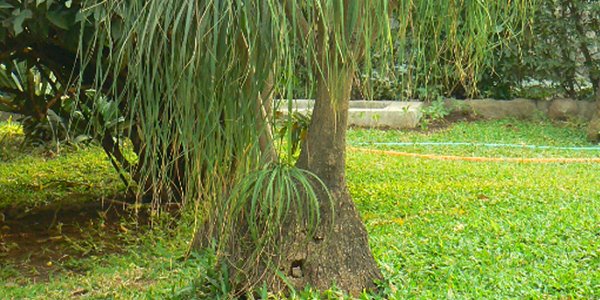Beaucarnea price

Where to buy and sell Beaucarnea, lowest (cheapest) and highest price.
check offers buy sell BeaucarneaToday price for BeaucarneaBeaucarnea wholesale prices 2022
The Current commodity price of Beaucarnea per kg, pound in the world in the global markets
beaucarnea
Price range: 8 - 8 EUR / 1 kg | Market: Mercados de Abastecimientos de Barcelona SA | Date: 2022-11-20
beaucarnea
Price range: 8 - 8 EUR / 1 kg | Market: Mercados de Abastecimientos de Barcelona SA | Date: 2022-11-13
beaucarnea
Price range: 8 - 8 EUR / 1 kg | Market: Mercados de Abastecimientos de Barcelona SA | Date: 2022-10-30
beaucarnea
Price range: 8 - 8 EUR / 1 kg | Market: Mercados de Abastecimientos de Barcelona SA | Date: 2022-10-23
beaucarnea
Price range: 8 - 8 EUR / 1 kg | Market: Mercados de Abastecimientos de Barcelona SA | Date: 2022-10-16
beaucarnea
Price range: 8 - 8 EUR / 1 kg | Market: Mercados de Abastecimientos de Barcelona SA | Date: 2022-10-02
beaucarnea
Price range: 8 - 8 EUR / 1 kg | Market: Mercados de Abastecimientos de Barcelona SA | Date: 2022-09-18
beaucarnea
Price range: 8 - 8 EUR / 1 kg | Market: Mercados de Abastecimientos de Barcelona SA | Date: 2022-09-04
beaucarnea
Price range: 8 - 8 EUR / 1 kg | Market: Mercados de Abastecimientos de Barcelona SA | Date: 2022-07-03
beaucarnea
Price range: 8 - 8 EUR / 1 kg | Market: Mercados de Abastecimientos de Barcelona SA | Date: 2022-06-05
beaucarnea
Price range: 8 - 8 EUR / 1 kg | Market: Mercados de Abastecimientos de Barcelona SA | Date: 2022-05-01
Beaucarnea
Beaucarnea, also known as elephant's foot or ponytail palm, is a genus of monocotyledonous flowering plants in the family Asparagaceae, subfamily Nolinoideae. It is native to Mexico and Central America. The genus comprises six species, all of which are endemic to Mexico. Beaucarnea is a genus of monocotyledonous flowering plants in the family Asparagaceae, subfamily Nolinoideae. It is native to Mexico and Central America. The genus comprises six species, all of which are endemic to Mexico. Beaucarnea recurvata, also known as elephant's foot or ponytail palm, is the most popular and widely cultivated species in the genus. It is native to Mexico and is characterized by its long, curving leaves and swollen, bulbous base. B. recurvata is a slow-growing plant that can reach up to 6 m (20 ft) in height. The leaves are evergreen, up to 2 m (6.6 ft) long and 20 cm (8 in) wide, and grow in a rosette at the top of the stem. The flowers are white or yellowish-white, 10–15 mm (0.4–0.6 in) long, and borne in panicles up to 60 cm (24 in) long. The fruit is a fleshy, greenish-white berry, 5–8 cm (2.0–3.1 in) in diameter. B. recurvata is widely cultivated as an ornamental plant in warm climates. It is tolerant of a wide variety of soils and conditions but prefers full sun and well-drained soil. It is susceptible to root rot if the roots are allowed to sit in water. The genus Beaucarnea was named after French botanist, Pierre Antoine Beaucarne (1754-1845). The specific epithet, recurvata, means "curved back" or "recurved", referring to the leaves. There are several ways to propagate beaucarnea. One is from seed, which is collected from the wild and then planted in a sterile potting mix. The other is through offsets or "pups" that form around the base of the parent plant. These can be carefully removed and replanted. Beaucarnea is a genus of four species of flowering plants in the family Asparagaceae, native to Mexico and Central America. The genus is named after French horticulturist Nicolas Bautier de Beaucarne (1759-1831). Beaucarnea is a slow-growing succulent with a bulbous base that can reach up to 6 feet (1.8 m) in height. The leaves are long and narrow, green to gray-green in color, and often have a powdery coating. The flowers are white or pink and borne on a tall stalk.Global beaucarnea production
According to the Food and Agriculture Organization of the United Nations, global production of beaucarnea was estimated at 1,000 tonnes in 2013. The majority of beaucarnea production is concentrated in Mexico, where the plant is native. Other countries with significant levels of production include Guatemala, Belize, and Honduras. Beaucarnea is typically propagated from seed, and the plant takes several years to reach maturity. Once mature, a beaucarnea plant can produce large numbers of offsets or small clones of the original plant. These offsets can be used to create new plants, which helps to increase production levels. The vast majority of beaucarnea is used for ornamental purposes, and the plant is commonly grown in gardens and as a houseplant. However, the plant does have some culinary uses, and the young leaves can be cooked and eaten. The flowers of the plant are also sometimes used in salads.Download our new
Husfarm App
Stay up to date with the current prieces of agricultural products all over the world.
Do you want to sell agricultural products?
Are you an Agricultural processor looking for high-quality products to buy?
Post an ad for FREE!
